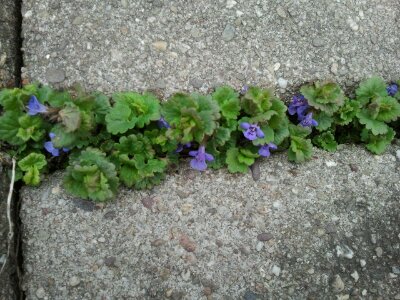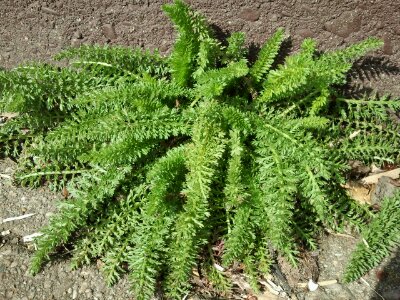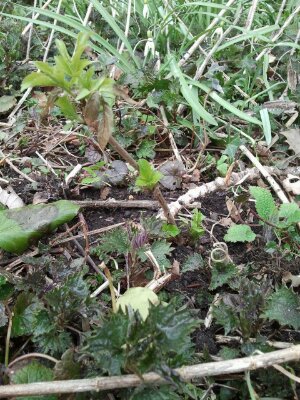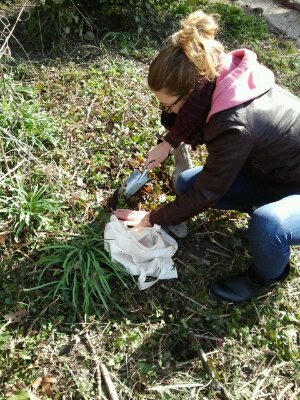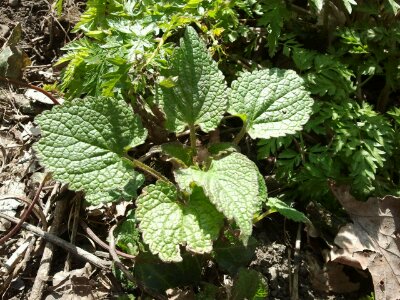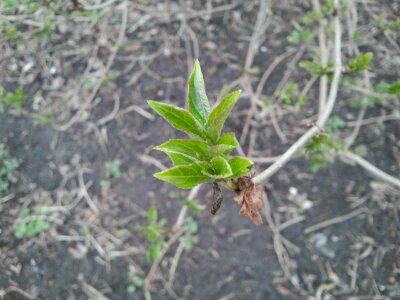A few photos and short comments today as we rapidly approach Beltane, the festival of early summer.

This week, the Lime trees which line many Amsterdam streets, burst into leaf. I love to eat these leaves, they have a mild flavour, are not tough and they bring many nutritional and medicinal uses. The trees in this street show a characteristic of Lime, they often grow leaves down the trunk. This is a bonus for foragers as it makes the leaves easy to harvest from a tree species which can easily reach 20 meters.

Comfrey plants are in bloom. This helps up to identify the species and help discern whether the comfrey growing near you in the white flowering Symphytum officinale, which is not seen as safe in internal preparations (such as teas) but helpful in external preparations (such as skin salves) or Symphytum uplandicum, which tends to have leafy parts which don’t contain the hepatotoxins in it’s leaves and flowers.
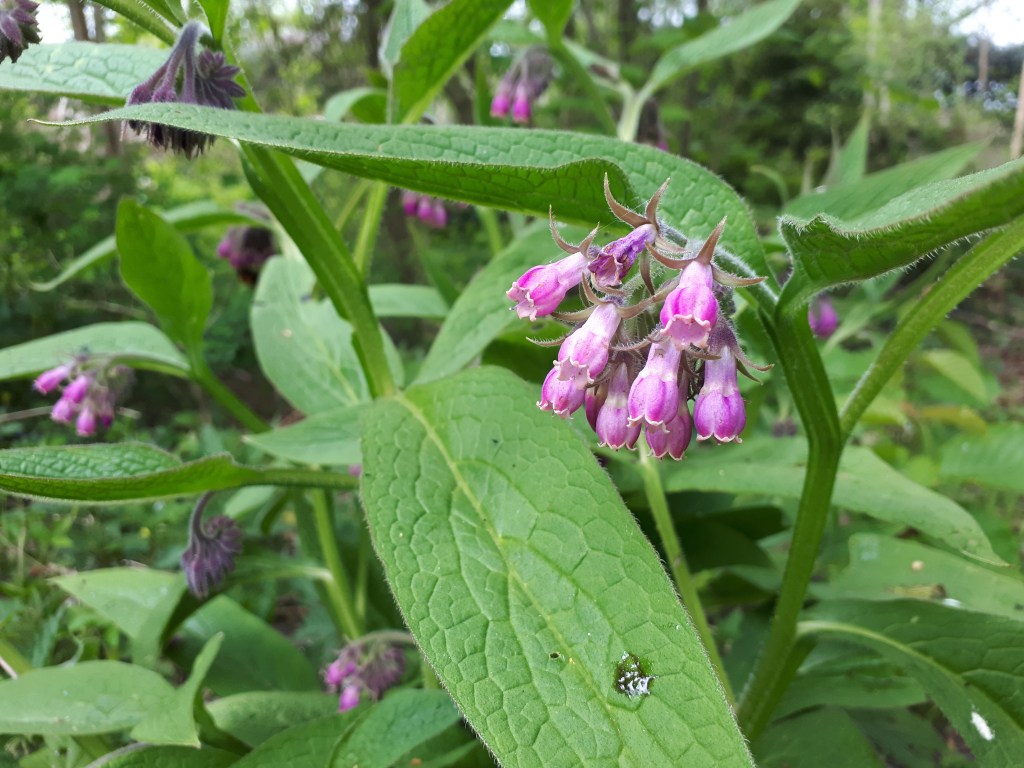
Next up, Hawthorn. This is called by many names around the world, including May Tree because it generally bursts into bloom around the first of May. Well this year, it is a little earlier than I have seen for a while. It has been in bloom for over a week and it looks very pretty. Hawthorn is a tree wrapped in much folklore and superstition, due to the plethora of medicinal uses associated with it. This is one of my favourite city herbs.

I have been Zooming with some of my apprentices over the past few weeks. I am posting the date and time on the Apprenticeship events page and any who fancy joining me for a chat, do. One week, there was a question about creams so I made them a video about it and have actually been more in love with the cream recipe since! It is a real skin soother. I made this one with orange blossom water and olive oil.

Magnolia is going over now, the flowers that it. If you have uses for the leaves then now is the time to harvest a few of those! Here is a beautiful specimen which grows in my local cemetery which happens to also be the Netherlands national arboretum – A nice double function, you may agree. The cemetery also houses the national funeral museum. An incredibly interesting place.
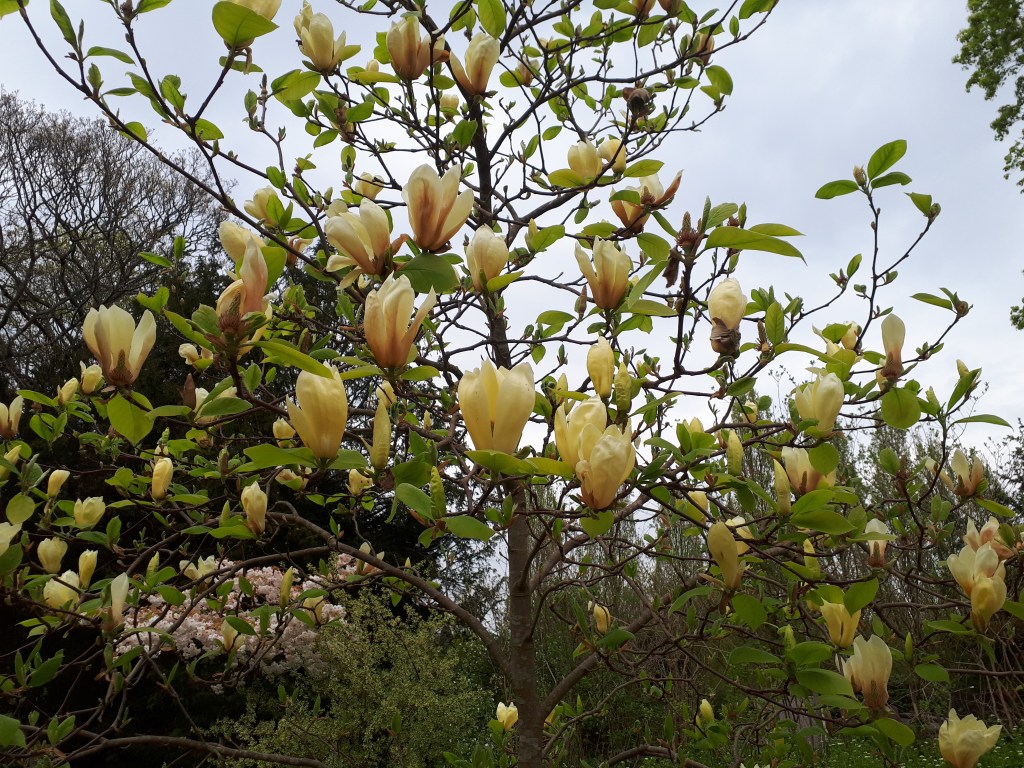
Below is a photo of an invasive weed which grows in parts of Park Frankendael. I identified it several years ago as Pennsylvania pellitory (Parietaria pensylvanica), a non-stinging member of the nettle family and a sister of the well known traditional herb, Pellitory-of-the-wall (Parietaria officinalis). It is called Glaskruid in Dutch and Cucumber weed in parts of the USA. Both helpful common names as it kind of looks glassy when held to the light (translucent) and it has a mild cucumer taste. Sadly, it is also known as asthma weed because when the flowers start to release their pollen, it can cause havoc for people with respiratory issues. This prime specimen is growing in the woodland area of the park. There is a single mature plant growing in the River of Herbs nettle orchard, on the left hand side, soon after entering through the gate. We are leaving it there and will keep an eye on it when the weedy seed spreading time comes.

Next today, can you see the Elderflower (Sambucus nigra) in the photo below? I found this yesterday, on my walk back home from the supermarket in Oostpoort. Beautiful, fragrant (often nastily fragrant), edible, medicinal and fabulous Elderflower!! I just thought you may like to see it as this heralds the start of the main foraging season for many people. Here are a few recipes and thoughts about elderflower. As you will see from those posts, I am a big fan of them and each year, as well as making foods, drinks and home remedies from them, I dry a batch or two and store carefully to use as a tea during times when my immune system needs a boost. Elderflower tea is a well known traditional remedy for. Since COVID-19 hit Amsterdam, my Elderflower tea has been drunk at least once a day so my stock has steadily been depleted. It will certainly be restocked in a few weeks time, when the flowers are open everywhere and I can harvest some for drying.

I am trying to grow more vegetables than usual at home. I may write a post about these later but for now, here’s a windowsill shot of some veg scraps which I am trying to bring on. The Paksoi is particularly fast!

You may have read about my Rosemary beetle problem. I can now report that the issue is improved but continuing. Yesterday, I picked only 5 beetles from the pruned bush. My poor Rosemary bush!

Lastly, a mention of a Dutch woman who asked for my advice by telephone earlier this week. She had been foraging in an Amsterdam park and noticed a young fern head had been snapped off and removed in an area with many fern heads were coming up. She took this to mean that some knowledgeable forager had found an edible fern and harvested some. She has heard that some young fern heads are edible and she wanted to try so she snapped one off, took it home, prepared and ate it. Unfortunately although now recovered, she became quite ill and she wondered what to do and did I know much about ferns.
My advice was to call her doctor or the emergency services if this sort of thing ever happened again and that if she relapsed at all now, to contact them straight away, showing them a photo of what she had eaten. Also not to follow supposed “leads” from other foragers. That fern head may have been snapped off by any number of things, from kids playing near them, a strong bird animal pecking around, a dog etc. This is just one of the reasons why I teacher foragers to pluck really gently and to leave no trace. When one person sees you have been there, others often think that it is fine to copy. Sometimes with catastrophic effects.
I don’t forage ferns and I keep a few bottles of Norit activated charcoal tablets handy, they may sometimes be helpful at absorbing toxins but hospital is your best bet, if a plant poisoning situation occurs – don’t be proud if it should happen, just call 999 / 112 / 991 etc and get professional help – quickly. And only harvest what you know really well, have identified properly and only eat what you are sure is safe for you. I am looking forward to meeting the woman and us going for a herb walk together.

So that’s it from me today. I hope that you are keeping well, getting enough fresh air and are looking forward to Beltane – May Day, this coming Friday. I certainly am! If you are on the Apprenticeship course and fancy a Zoom or socially distant meeting in the plants, let me know!





